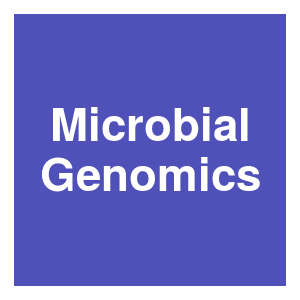
Keywords: symbiosis

|
Wolbachia Transinfection Via Embryonic MicroinjectionZhang, M., Xi, Z., Methods in Molecular Biology, 2739. 2023.
The process of transferring Wolbachia from one species to another to establish a stable, maternally inherited infection in the target species is known as transinfection. The success of transinfection is primarily achieved through embryonic microinjection, which is the most direct ... Keywords: gene drive synthetic, microbiome, symbiosis |

|
Rational engineering of a synthetic insect-bacterial mutualismY. Su, H.-C. Lin, L. S. Teh, F. Chevance, I. James, C. Mayfield, K. G. Golic, J. A. Gagnon, O. Rog and C. Dale, Current Biology, 2022.
Summary Many insects maintain mutualistic associations with bacterial endosymbionts, but little is known about how they originate in nature. In this study, we describe the establishment and manipulation of a synthetic insect-bacterial symbiosis in a weevil host. Following egg ... Keywords: gene drive synthetic, microbiome, symbiosis |

|
Biologists engineered insect-bacterial mutualism in ‘bucket list’ achievementAnnonymous, @THEU, 2022.
A new paper in Current Biology authored by Crystal Su and other collaborators in the School of Biological Sciences describes the development of a novel, synthetic insect-bacterial symbiosis that is sustained through many insect generations by transovarial bacterial transmission. ... Keywords: gene drive synthetic, microbiome, symbiosis |

|
Wolbachia endosymbionts in two Anopheles species indicates independent acquisitions and lack of prophage elementsS. Quek, L. Cerdeira, C. L. Jeffries, S. Tomlinson, T. Walker, G. L. Hughes and E. Heinz, Microbial Genomics, 8. 2022.
Wolbachia is a genus of obligate bacterial endosymbionts that infect a diverse range of arthropod species as well as filarial nematodes, with its single described species, Wolbachia pipientis, divided into several ‘supergroups’ based on multilocus sequence typing. Wolbachia ... Keywords: gene drive synthetic, microbiome, symbiosis |
Keywords: symbiosis

|
Wolbachia Transinfection Via Embryonic MicroinjectionZhang, M., Xi, Z., Methods in Molecular Biology, 2739. 2023.
The process of transferring Wolbachia from one species to another to establish a stable, maternally inherited infection in the target species is known as transinfection. The success of transinfection is primarily achieved through embryonic microinjection, which is the most direct ... Keywords: gene drive synthetic, microbiome, symbiosis |

|
Rational engineering of a synthetic insect-bacterial mutualismY. Su, H.-C. Lin, L. S. Teh, F. Chevance, I. James, C. Mayfield, K. G. Golic, J. A. Gagnon, O. Rog and C. Dale, Current Biology, 2022.
Summary Many insects maintain mutualistic associations with bacterial endosymbionts, but little is known about how they originate in nature. In this study, we describe the establishment and manipulation of a synthetic insect-bacterial symbiosis in a weevil host. Following egg ... Keywords: gene drive synthetic, microbiome, symbiosis |

|
Biologists engineered insect-bacterial mutualism in ‘bucket list’ achievementAnnonymous, @THEU, 2022.
A new paper in Current Biology authored by Crystal Su and other collaborators in the School of Biological Sciences describes the development of a novel, synthetic insect-bacterial symbiosis that is sustained through many insect generations by transovarial bacterial transmission. ... Keywords: gene drive synthetic, microbiome, symbiosis |

|
Wolbachia endosymbionts in two Anopheles species indicates independent acquisitions and lack of prophage elementsS. Quek, L. Cerdeira, C. L. Jeffries, S. Tomlinson, T. Walker, G. L. Hughes and E. Heinz, Microbial Genomics, 8. 2022.
Wolbachia is a genus of obligate bacterial endosymbionts that infect a diverse range of arthropod species as well as filarial nematodes, with its single described species, Wolbachia pipientis, divided into several ‘supergroups’ based on multilocus sequence typing. Wolbachia ... Keywords: gene drive synthetic, microbiome, symbiosis |

Contact
David O’Brochta
Foundation for the
National Institutes of Health
geneconvenevi@fnih.org
RSS

